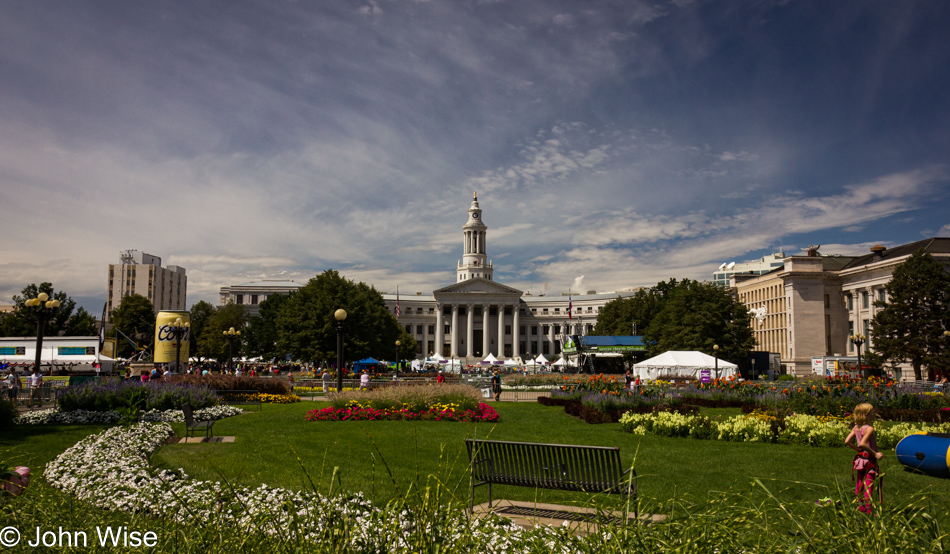
Boarded a jetplane shortly after sunrise out of Phoenix for an early arrival in Denver, Colorado. We have business of sorts to deal with here.

We are not on hand for this street fest, though it’s an interesting prospect. The location we are looking for is not far from the Denver Civic Center, and the Taste of Colorado Festival just happens to be going on this weekend.
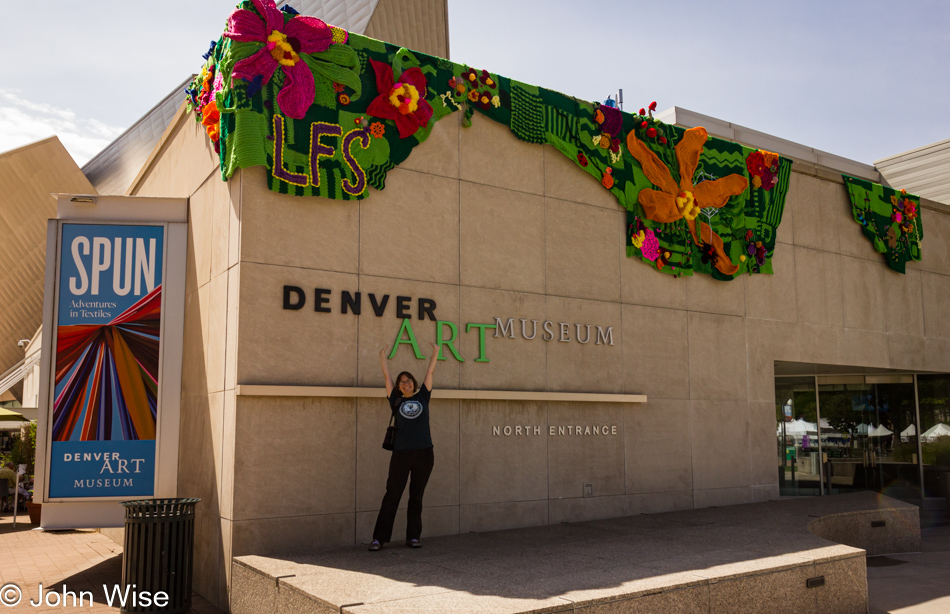
Here we are at the Denver Art Museum, and can you guess why? Caroline had learned that an exhibition titled “Spun – Adventures in Textiles,” which had been running since May 19th, was coming to a close in a few weeks on September 22. If we were going to see the exhibit, it was now or never.

This a hint of things to come because we’ll not be visiting all of the Spun exhibits yet, plus, there is no photography allowed of the textiles.
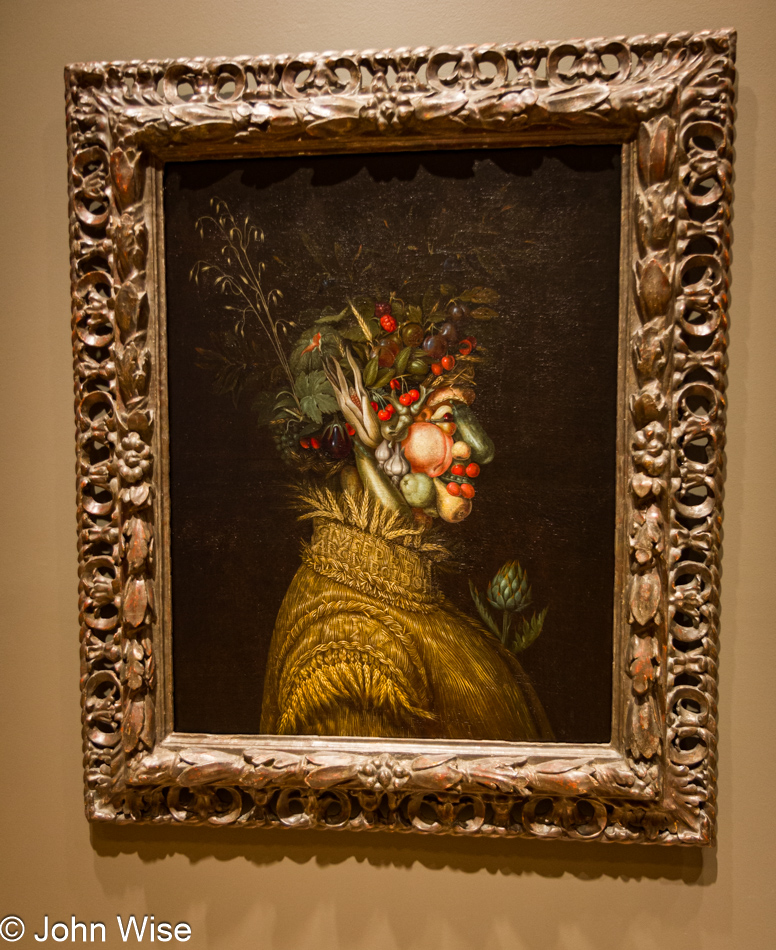
Well, now, I’ve seen The Four Seasons Summer by Giuseppe Arcimboldo with my own eyes.
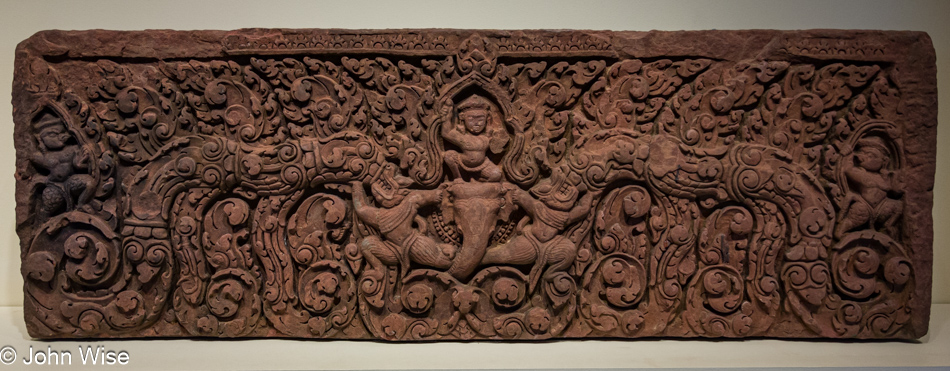
The sculpture is titled “Indra Riding His Royal Elephant” and arrives as a 1,000-year-old piece out of Thailand or Cambodia.
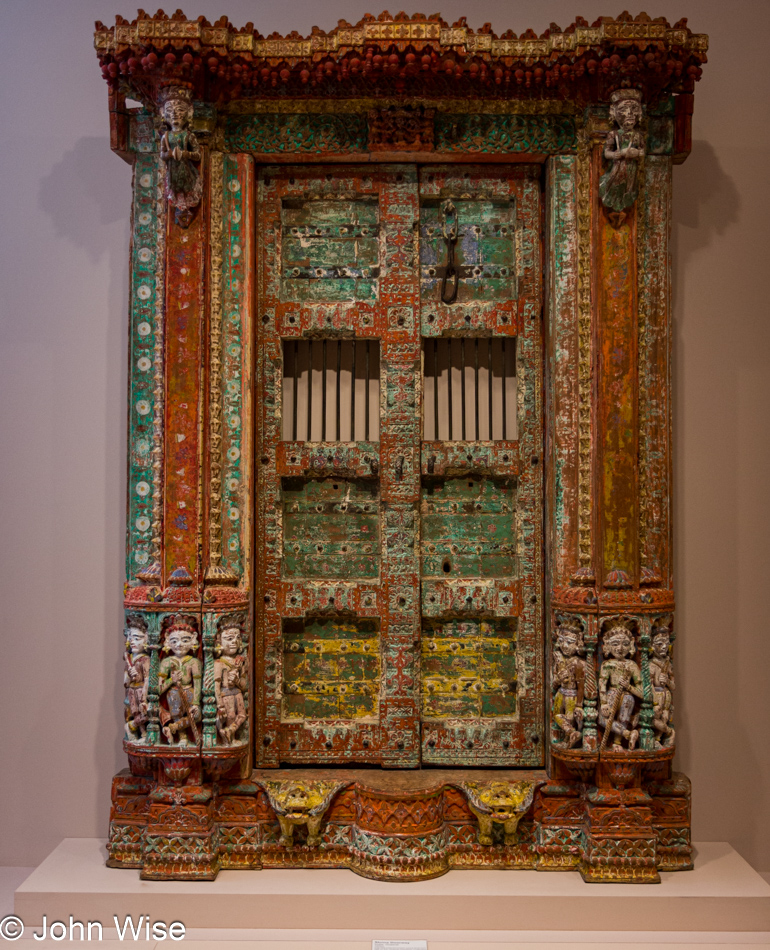
A Gujarat, India, Shrine Door from 1600.

In the world of art collection, one has to wonder about how a palace facade from Pakistan is collected and shipped off.
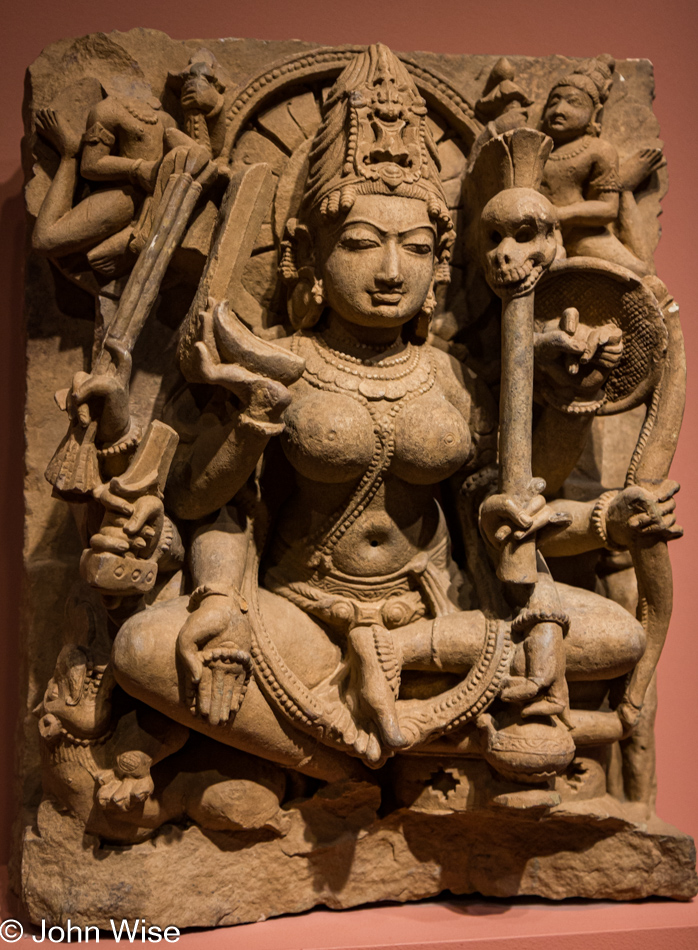
Seated Eight-Armed Durga from Madhya Pradesh Province, India, about 1,000 years old.

Apparently, the Olmec people left an impression on those who would follow them in the Veracruz region of Mexico for making head sculptures. The person who made this Cross-eyed Head Hacha must have had a sense of humor. As far as I can tell, hacha is Spanish for ax, so is this a cutting tool?
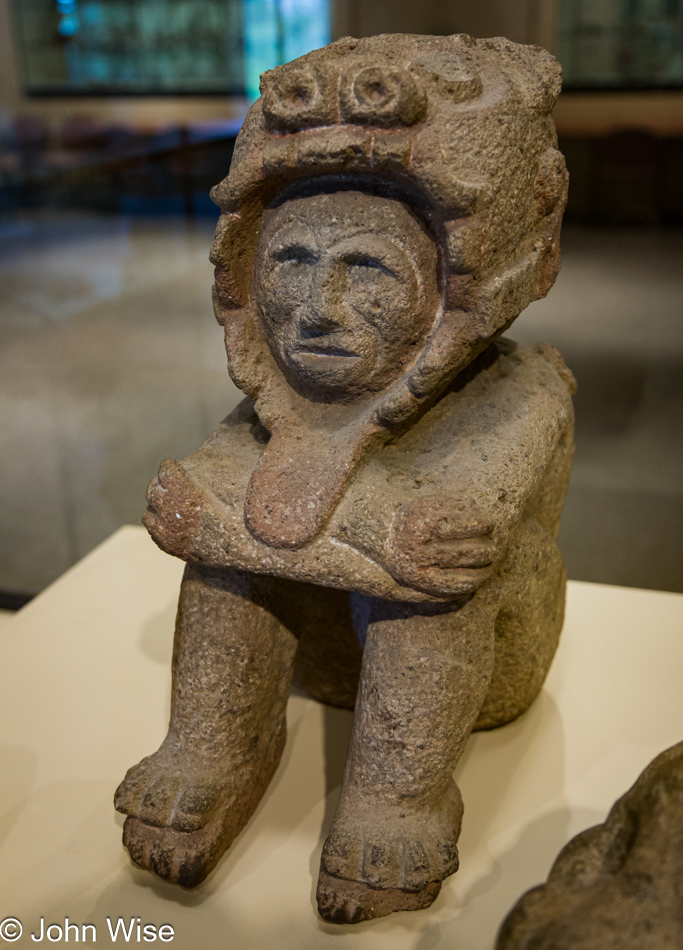
I believe this is an Aztec sculpture by the original creators of cosplay.
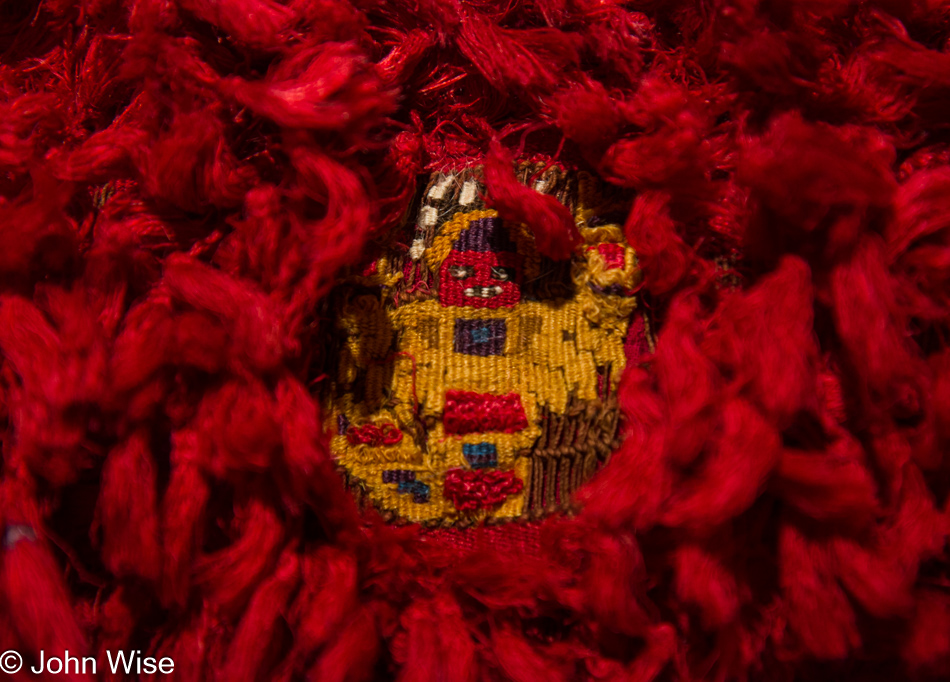
From Peru, we ogled this Tasseled Tunic of the Chimu Culture that is estimated to have been created between 1300 and 1450 AD.
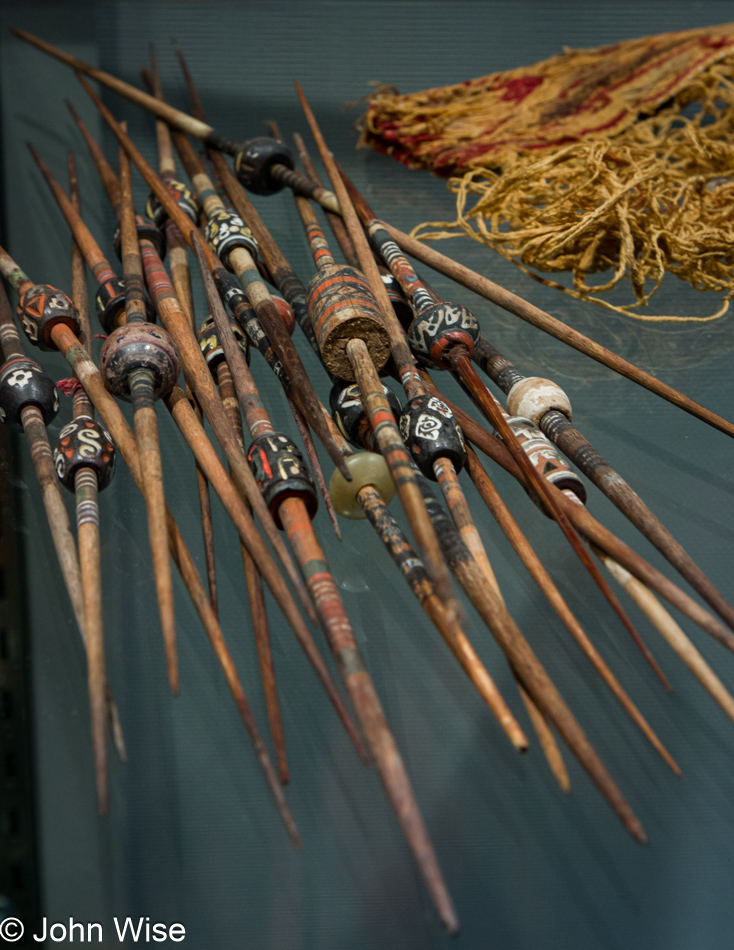
Unfortunately, we didn’t note the provenance of these beautiful spindles, but they are probably also from ancient Peru.

These spindles still held spun fibers. The intensity of the red threads was astounding.
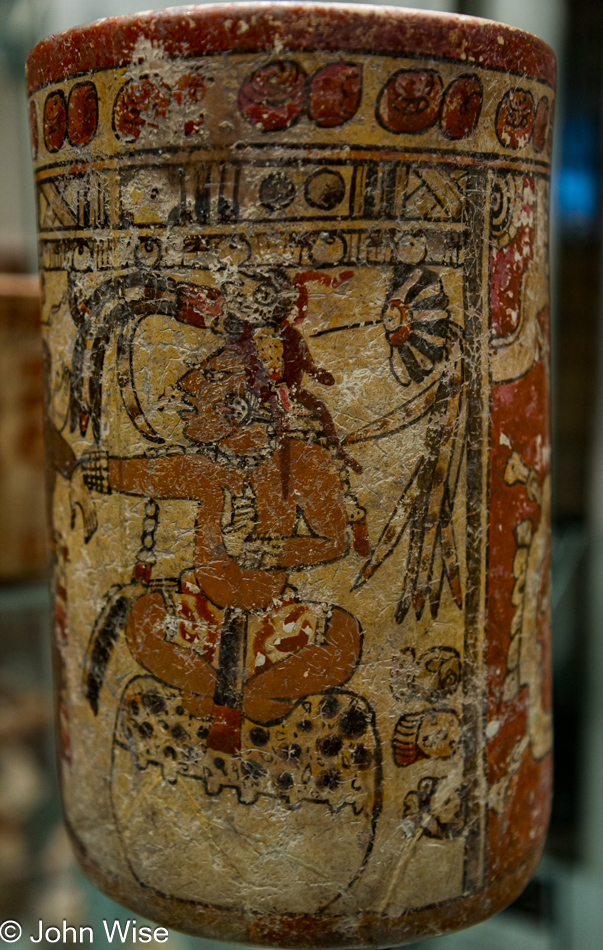
Mayan terracotta vase possibly used during ritualized drinking of chocolate medicine

I don’t know about my wife, but I could use one of these Incense Burners with Sun God Face at our place. It doesn’t have to come from the Guatemalan Highlands and be more than 1100 years old; I could make do with one that’s only 500 years old. If anyone has a lead on one in good shape for less than a couple hundred dollars, hit me up.

For just a moment, I thought this giant sculpture from Roxanne Swentzell had Caroline thinking about becoming a mom, but I was wrong.

This Inupiaq body armor is made of walrus and seal skin; I vote for this to become a new line of casual daily wear so I can retire my aging Chilkat wrap we picked up a couple of years ago. [Update: Caroline informs me that I’m full of you-know-what as we could have never afforded that wrap and that it’s too hot to wear walrus in the Arizona desert.]
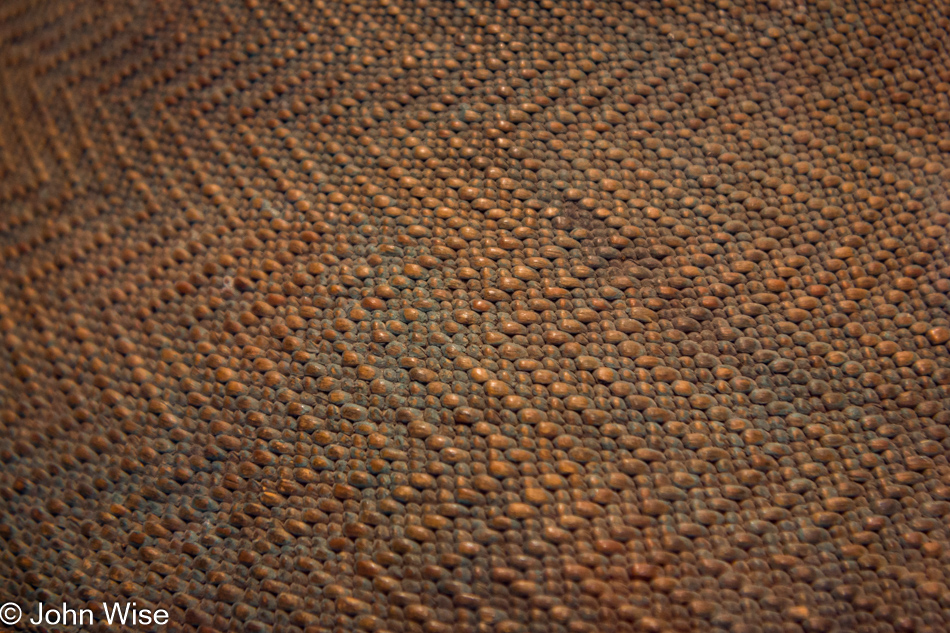
You might never guess what this is that I’m showing you if I didn’t explain things; it is the close-up detail of a Tlingit hat made of spruce root.
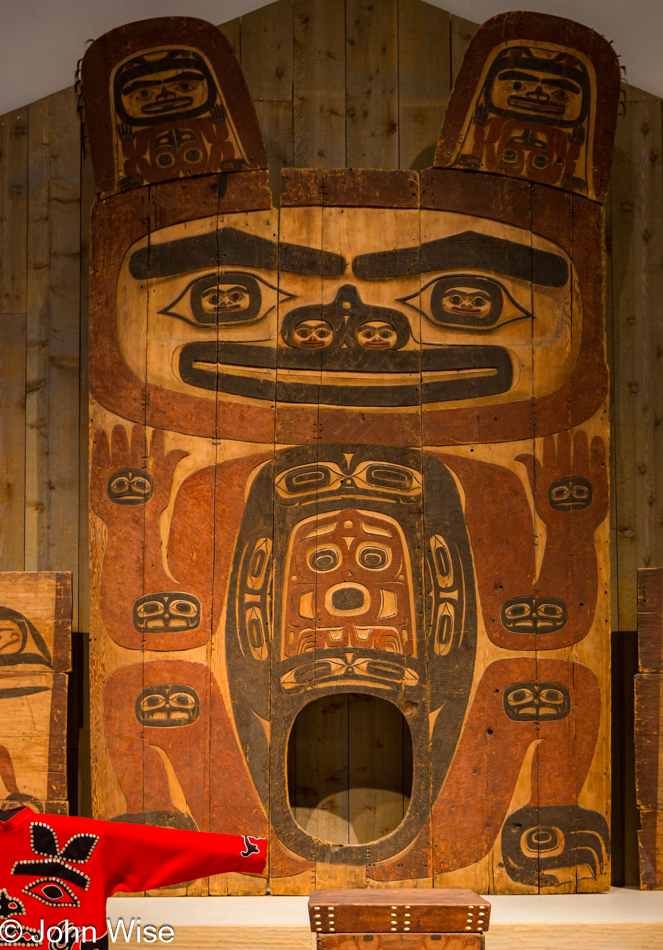
The Inupiat, Chilkat, and Tlingit all share the commonality that they are indigenous people living in different areas of Alaska.
These exhibits are some of the treasures of being alive in this age where people can explore the art, history, and culture of people from different geographic regions and eras in a single air-conditioned facility and then turn around and research the most current available knowledge about the subjects on a device in their pockets.
What else was explored over the rest of the day into the evening is long lost as there were no notes taken during this trip, and the reality is that this post wasn’t assembled until mid-2023, nearly ten years after the experiences were gained.